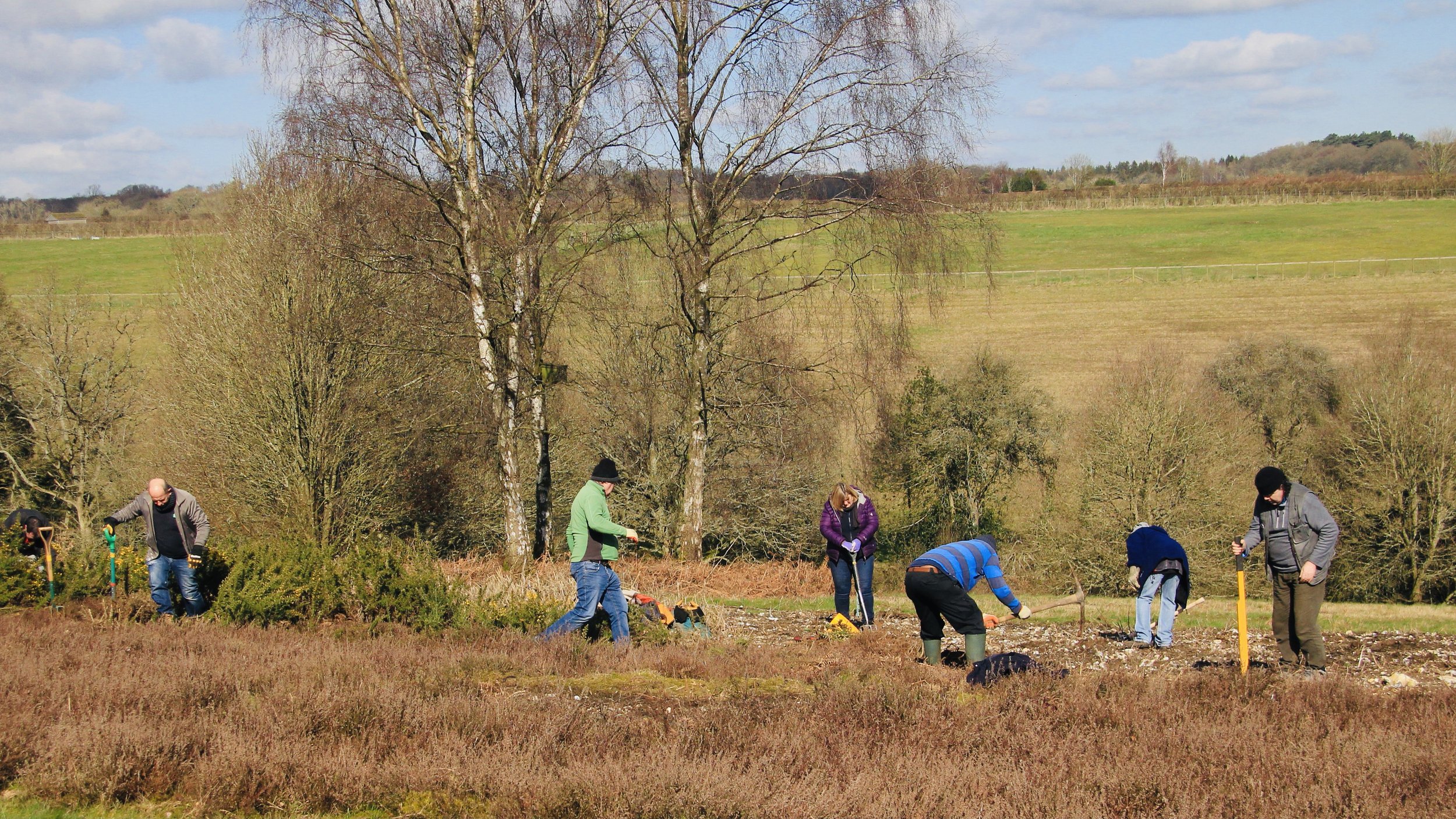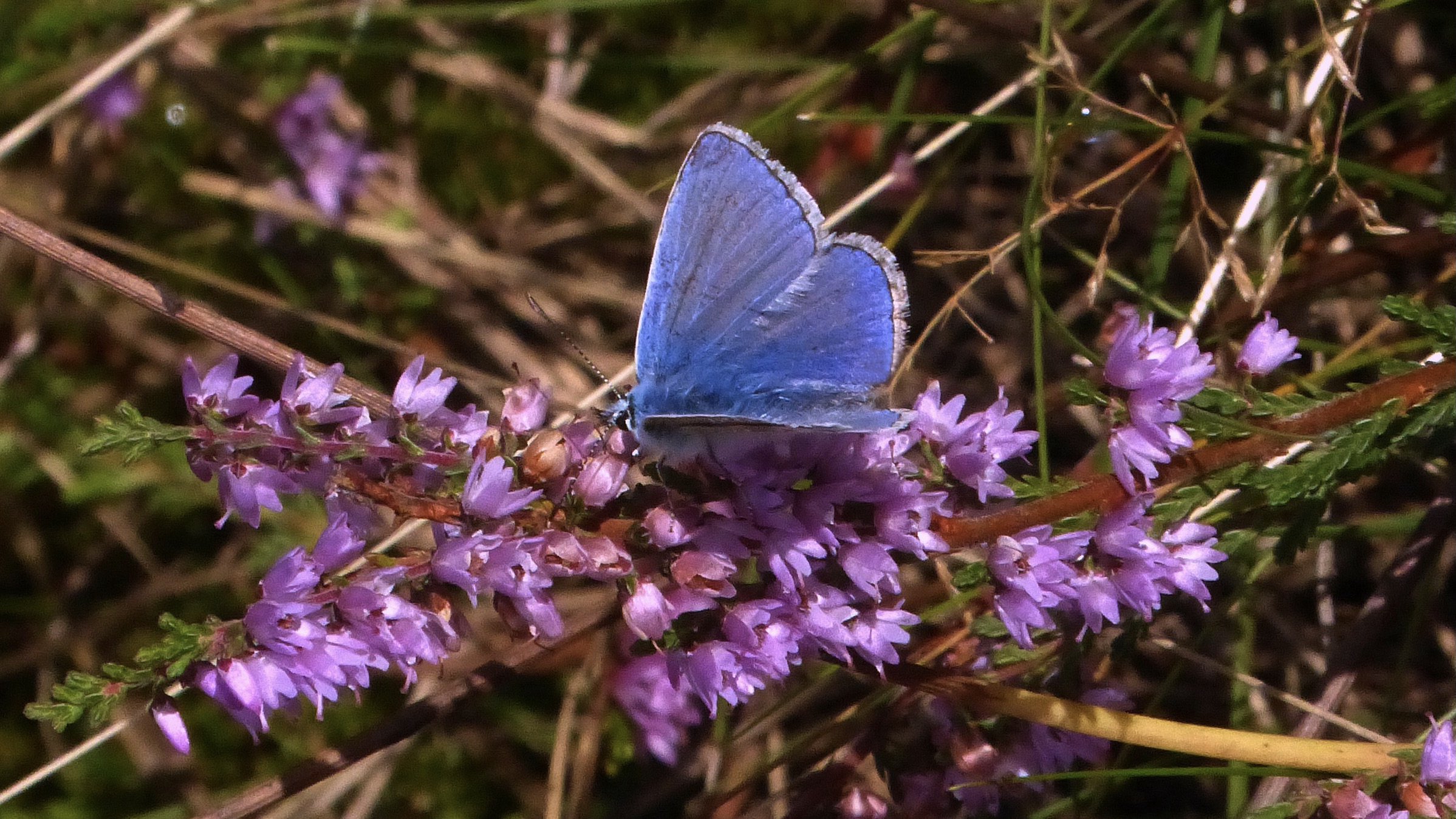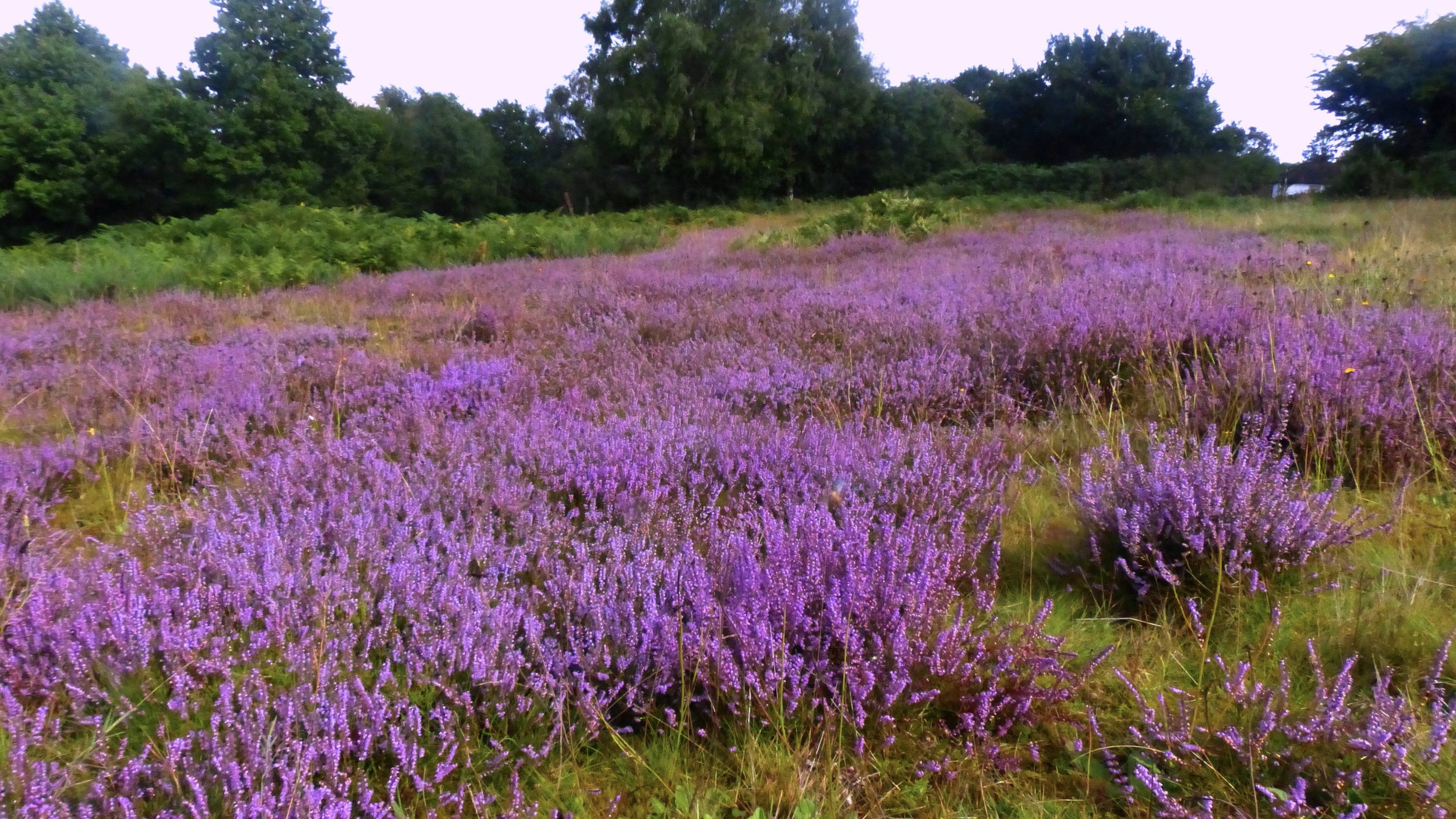Find out About recent work on the Commons
EXTENDING HEATHLAND HABITAT ON THE COMMONS
Background
Work was originally started in 2001, and again in 2003, to re-establish two heather patches on the commons, one either side of Horseblock Lane. There is always a danger of the plants being swamped by a combination of gorse, brambles, birch and bracken, and various volunteer groups have kept these in check ever since. The heather is also cut (recently by James) at least once every two years, in order to keep it in good health and encourage flowering. Other heathland species are thriving in these areas, such as wavy hairgrass and sheep’s sorrel which need open ground to thrive, along with heath bedstraw all of which only grow on acid soil.
Recent work
In 2019, James scraped some of the more overgrown areas back to the subsoil in order to assist natural germination, and in addition, we harvested seed in the winters of 2019 and 2020, which was then scattered on the bare ground.
Germination of heather can take up to 2 years and the plants take a long time to become established. However, there are now good numbers of new, tiny heather plants starting to come through. Those on the Hawridge patch are generally larger than those on the Cholesbury patch. During the last year or so, more volunteer work has helped to clear gorse and bracken where they were threatening to invade the established heather plants. Thanks are due to several D of E students and their families, as well as the ‘Get Out There’ team from Hammersmith and other local volunteers. Some solid areas of gorse have been left to grow as part of the heathland species mix.
Future work
Opening up the new areas has allowed many other plants to colonise, including, this year, some welcome patches of foxgloves. However, the bracken is also rampant as well as tiny new gorse seedlings. We now need to control these invasive species as follows:
1. Established gorse
Where gorse is within the heather areas, it is cut at the same time as the heather in the spring. We decided not to cut in 2021, so it would be helpful if this could be confirmed as part of James’s schedule for 2022. The solid gorse areas will need no maintenance for several years.
2. Gorse seedlings
If possible, more volunteer working parties should be asked to hand-weed the gorse plants before they grow much bigger, at which point it becomes a major operation to remove them. After rain is a good time to do it as the ground is softer and the roots looser.
3. Bracken
Ideally bracken stems should be cut or pulled when two fronds have opened. If it is not possible to do it at that time, any time after that, e.g. when the gorse is being weeded, will help to weaken the rhizomes for the future.
Overall, we are making progress in re-establishing heathland on the Commons. We intend to maintain it as a healthy and attractive feature. If agreed by CS and the HCCPS committee, this work can dovetail neatly with the established Commons maintenance plan.




